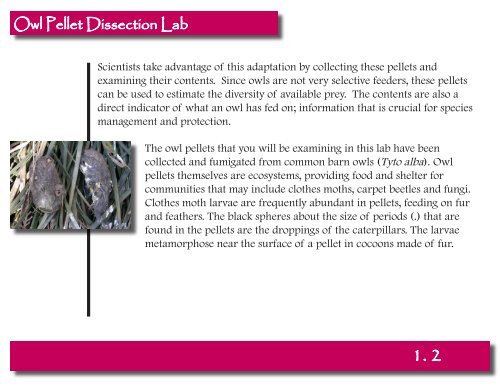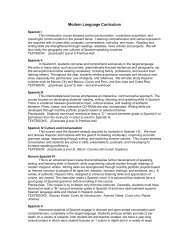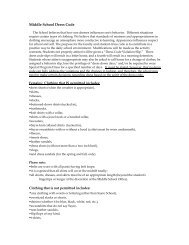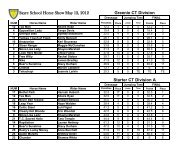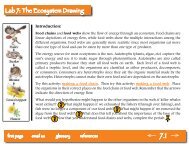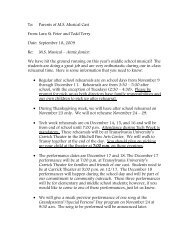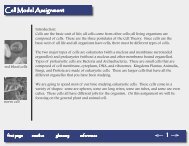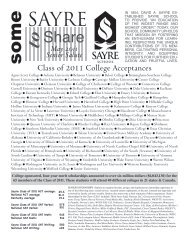Owl Pellet Dissection Lab
Owl Pellet Dissection Lab
Owl Pellet Dissection Lab
Create successful ePaper yourself
Turn your PDF publications into a flip-book with our unique Google optimized e-Paper software.
<strong>Owl</strong> <strong>Pellet</strong> <strong>Dissection</strong> <strong>Lab</strong><br />
Scientists take advantage of this adaptation by collecting these pellets and<br />
examining their contents. Since owls are not very selective feeders, these pellets<br />
can be used to estimate the diversity of available prey. The contents are also a<br />
direct indicator of what an owl has fed on; information that is crucial for species<br />
management and protection.<br />
The owl pellets that you will be examining in this lab have been<br />
collected and fumigated from common barn owls (Tyto alba). <strong>Owl</strong><br />
pellets themselves are ecosystems, providing food and shelter for<br />
communities that may include clothes moths, carpet beetles and fungi.<br />
Clothes moth larvae are frequently abundant in pellets, feeding on fur<br />
and feathers. The black spheres about the size of periods (.) that are<br />
found in the pellets are the droppings of the caterpillars. The larvae<br />
metamorphose near the surface of a pellet in cocoons made of fur.<br />
1.


